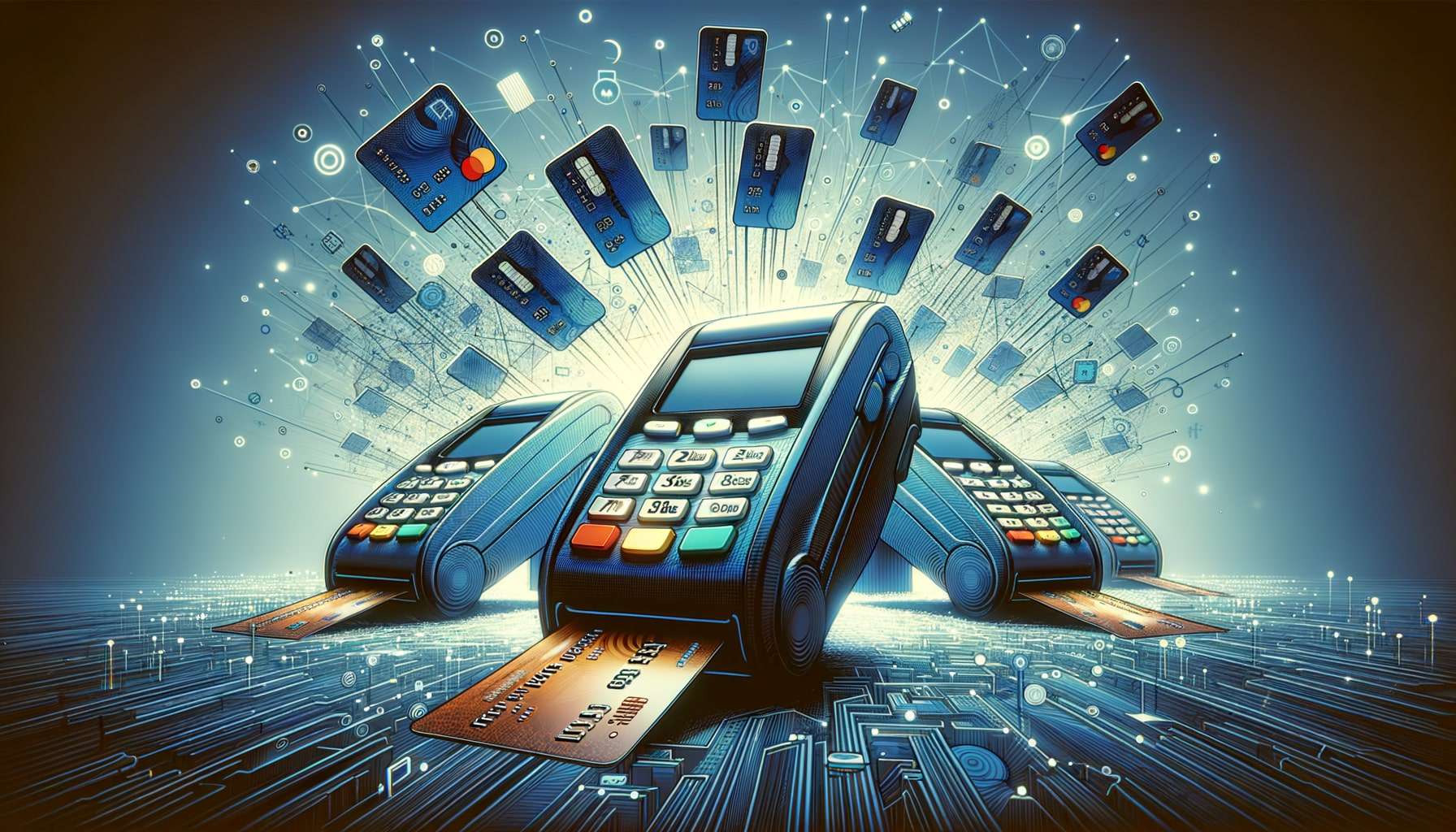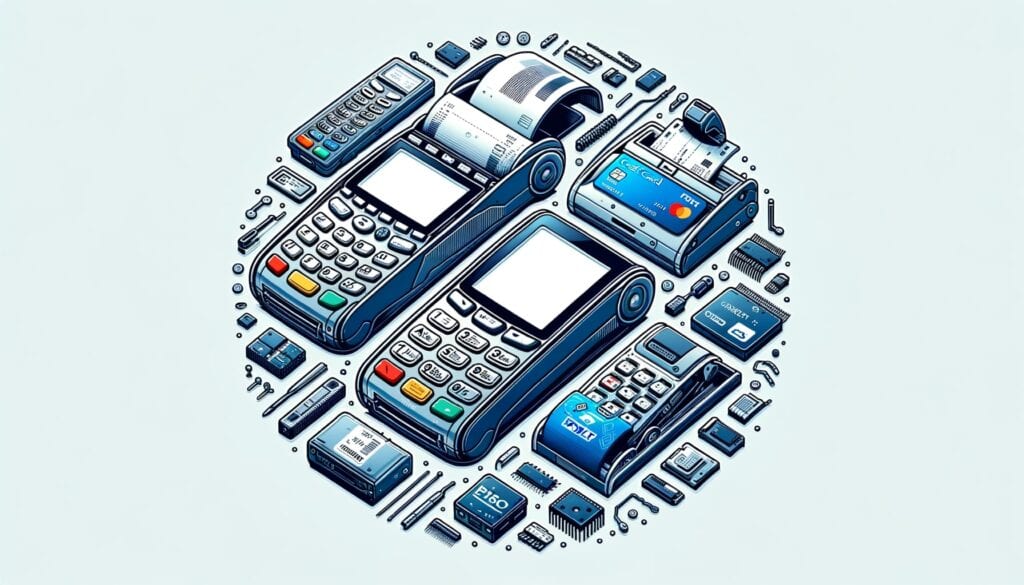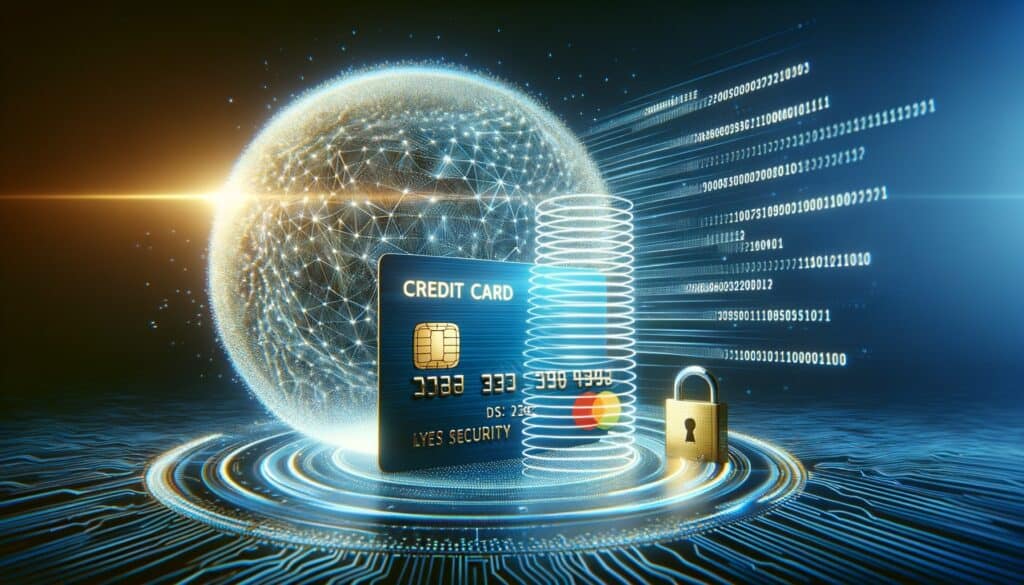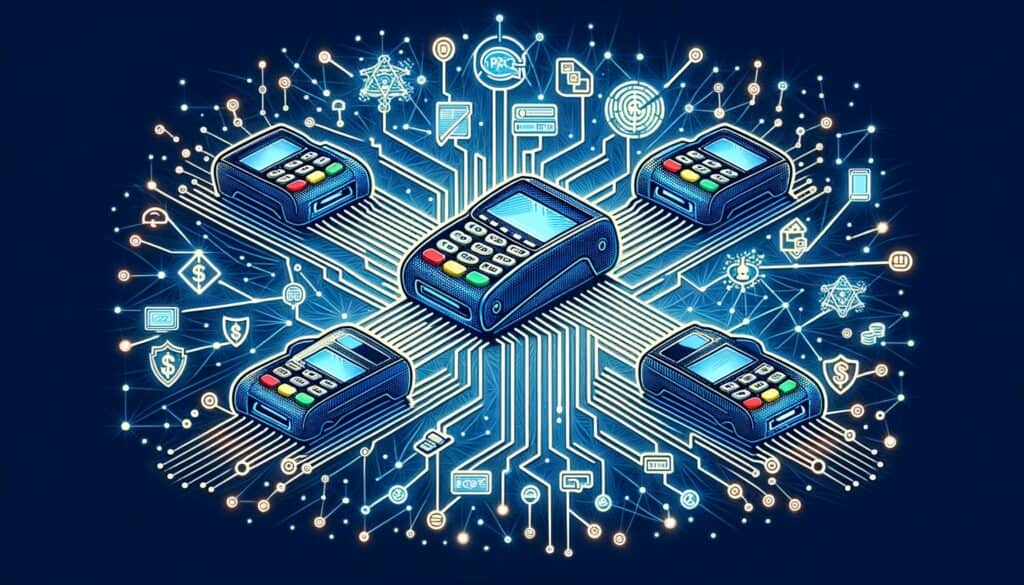
By Amanda Hoglund October 11, 2024
Credit card terminals have become an integral part of our daily lives, enabling us to make secure and convenient payments. These devices are found in various establishments, including retail stores, restaurants, and online businesses. But have you ever wondered how credit card terminals actually work?
In this detailed guide, we will explore the inner workings of credit card terminals, from their types and components to the transaction process and data encryption. So, let’s dive in and unravel the mysteries behind these essential payment devices.
Types of Credit Card Terminals
Credit card terminals come in various forms, each designed to cater to different business needs and environments. Let’s take a closer look at the three main types of credit card terminals: traditional countertop terminals, wireless terminals, and mobile card readers.
Traditional Countertop Terminals
Traditional countertop terminals are the most common type of credit card terminals found in brick-and-mortar stores. These devices are typically connected to a phone line or internet connection and are placed on a counter or desk for easy access. They feature a keypad for entering payment information, a display screen for transaction details, and a card reader for swiping or inserting credit cards.
One of the key advantages of traditional countertop terminals is their reliability and durability. They are built to withstand heavy usage and are equipped with advanced security features to protect sensitive cardholder data. Additionally, these terminals often come with additional features such as receipt printing and the ability to process contactless payments.
Wireless Terminals
Wireless terminals offer businesses the flexibility to accept payments anywhere within their premises, without the need for a physical connection to a phone line or internet. These terminals use wireless technology, such as Bluetooth or Wi-Fi, to communicate with the payment processor and complete transactions.
Wireless terminals are particularly popular in industries such as restaurants, cafes, and outdoor events, where mobility is essential. They allow servers to take payments directly at the table, enhancing customer experience and reducing wait times. These terminals typically have a compact design, with a built-in card reader, display screen, and keypad.
Mobile Card Readers
Mobile card readers have gained significant popularity in recent years, thanks to the rise of smartphones and tablets. These devices transform your mobile device into a portable credit card terminal, allowing you to accept payments on the go. Mobile card readers connect to your smartphone or tablet via a headphone jack or Bluetooth, enabling you to swipe or insert credit cards and process transactions through a dedicated mobile app.
Mobile card readers are ideal for small businesses, independent contractors, and individuals who require a cost-effective and convenient payment solution. They are lightweight, easy to carry, and often come with additional features such as inventory management and sales reporting.
Components of a Credit Card Terminal

To understand how credit card terminals work, it is essential to familiarize yourself with their components. While the specific design may vary depending on the terminal type, most credit card terminals consist of the following key elements:
- Card Reader: This component reads the information stored on the magnetic stripe or chip of the credit card. It captures the cardholder’s account number, expiration date, and other relevant data.
- Keypad: The keypad allows the customer to enter their PIN (Personal Identification Number) for secure transactions. It also enables the merchant to input transaction amounts or other necessary information.
- Display Screen: The display screen provides visual feedback to both the customer and the merchant. It shows transaction details, prompts for PIN entry, and displays error messages if any.
- Printer: Some credit card terminals come equipped with an integrated printer. It generates receipts for customers, providing a record of the transaction.
- Connectivity Options: Credit card terminals require a connection to process transactions. They can be connected via phone lines, Ethernet cables, Wi-Fi, or Bluetooth, depending on the terminal type.
The Transaction Process
Now that we understand the different types and components of credit card terminals, let’s delve into the transaction process. When a customer makes a payment using a credit card, several steps are involved to ensure a secure and successful transaction. These steps include authorization, batching, and settlement.
- Authorization: When a customer swipes or inserts their credit card into the terminal, the card reader captures the card data. The terminal then sends this information to the payment processor or acquiring bank for authorization. The payment processor verifies the card details, checks for available funds, and confirms whether the transaction can proceed.
- Batching: Once the authorization is obtained, the terminal stores the transaction details in its memory. Throughout the day, the terminal accumulates multiple transactions in a batch. At the end of the business day, the merchant sends the batch to the payment processor for settlement.
- Settlement: The payment processor processes the batched transactions and transfers the funds from the customer’s bank to the merchant’s account. This step involves deducting any applicable fees or charges. The settlement process typically takes a couple of business days, after which the funds are deposited into the merchant’s bank account.
Understanding Card Data Encryption

One of the critical aspects of credit card terminals is data encryption. Encryption ensures that sensitive cardholder information remains secure during transmission and storage. Let’s explore how card data encryption works to protect against fraud and unauthorized access.
When a credit card is swiped or inserted into a terminal, the card reader encrypts the card data before transmitting it to the payment processor. Encryption involves converting the card information into a coded format that can only be deciphered with the appropriate decryption key.
There are two primary types of encryption used in credit card terminals: magnetic stripe encryption and EMV chip encryption.
Magnetic stripe encryption is used when a customer swipes their card. The card reader encrypts the data on the magnetic stripe, making it unreadable to anyone who intercepts it during transmission.
EMV chip encryption, on the other hand, is used when a customer inserts their card into a chip-enabled terminal. The chip on the card generates a unique transaction code for each transaction, making it nearly impossible to clone or counterfeit the card.
By encrypting card data, credit card terminals add an extra layer of security to protect against data breaches and fraud. It ensures that even if the data is intercepted, it cannot be used to make unauthorized transactions.
Connecting Credit Card Terminals to Payment Processors

To process credit card transactions, credit card terminals need to establish a connection with payment processors or acquiring banks. This connection allows the terminal to transmit transaction data for authorization and settlement. Let’s explore the different ways credit card terminals can be connected to payment processors.
- Phone Line Connection: Traditional countertop terminals often use a phone line connection to communicate with the payment processor. The terminal dials a specific phone number provided by the processor, establishing a secure connection for transaction processing.
- Internet Connection: With the advent of the internet, many credit card terminals now use an internet connection for faster and more reliable transaction processing. These terminals connect to the payment processor’s servers via an Ethernet cable or Wi-Fi.
- Wireless Connection: Wireless terminals utilize wireless networks, such as Wi-Fi or Bluetooth, to establish a connection with the payment processor. This eliminates the need for physical connections and provides flexibility for businesses that require mobility.
- Cellular Connection: Some credit card terminals have built-in cellular capabilities, allowing them to connect to the payment processor using cellular networks. This is particularly useful for businesses that operate in remote locations or do not have access to reliable internet connections.
The choice of connection method depends on factors such as the terminal type, business requirements, and availability of network infrastructure. It is essential for businesses to choose a reliable and secure connection method to ensure smooth transaction processing.
Troubleshooting Common Issues with Credit Card Terminals
While credit card terminals are designed to be reliable, occasional issues may arise that require troubleshooting. Let’s explore some common problems that merchants may encounter and how to resolve them.
- Connection Issues: If the terminal is not connecting to the payment processor, check the physical connections and ensure that the internet or phone line is working correctly. Restarting the terminal or contacting technical support may also help resolve connectivity problems.
- Card Reading Errors: If the terminal is unable to read a customer’s card, ensure that the card is inserted or swiped correctly. Clean the card reader and check for any physical damage or debris that may be obstructing the card’s contact with the reader.
- Printer Problems: If the terminal’s printer is not functioning correctly, check the paper roll for jams or replace it if necessary. Ensure that the printer is properly aligned and that the ink or thermal paper is not depleted.
- Software Updates: Regularly updating the terminal’s software is crucial to ensure compatibility with the latest security standards and payment processing protocols. Check for software updates provided by the terminal manufacturer or contact technical support for assistance.
- Error Messages: If the terminal displays error messages, refer to the user manual or contact technical support for guidance. Error messages often provide specific instructions or codes that can help identify and resolve the issue.
It is important for businesses to have a reliable technical support system in place to address any issues promptly. Regular maintenance and periodic inspections can also help prevent potential problems with credit card terminals.
Frequently Asked Questions (FAQs)
Q.1: Can credit card terminals process debit card transactions?
Yes, credit card terminals can process both credit card and debit card transactions. Debit card transactions require the customer to enter their PIN for authorization.
Q.2: Are credit card terminals secure?
Credit card terminals employ various security measures, such as data encryption and secure connections, to ensure the security of cardholder information. However, it is essential for businesses to follow best practices, such as regular software updates and compliance with industry standards, to maintain a secure payment environment.
Q.3: Can credit card terminals accept contactless payments?
Yes, many credit card terminals are equipped with contactless payment capabilities, allowing customers to make payments by simply tapping their contactless-enabled cards or mobile devices.
Q.4: How long does it take for a credit card transaction to be processed?
The time it takes for a credit card transaction to be processed depends on various factors, including the payment processor, network congestion, and the type of connection used. In general, transactions are authorized within seconds, but settlement may take a couple of business days.
Q.5: Can credit card terminals be used for online transactions?
While traditional credit card terminals are primarily designed for in-person transactions, virtual terminals can be used for online transactions. Virtual terminals allow businesses to manually enter card information for processing payments through a computer or laptop.
Conclusion
Credit card terminals play a crucial role in facilitating secure and convenient payment transactions. Understanding how these devices work is essential for both merchants and consumers. In this detailed guide, we explored the different types and components of credit card terminals, the transaction process, card data encryption, connecting terminals to payment processors, and troubleshooting common issues.
By familiarizing yourself with the inner workings of credit card terminals, you can ensure smooth and secure payment experiences for your business and customers.